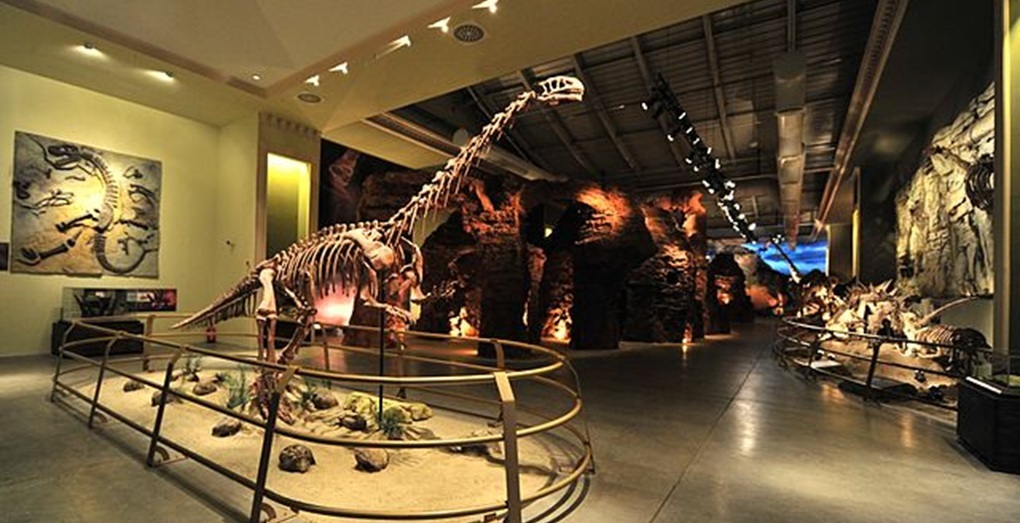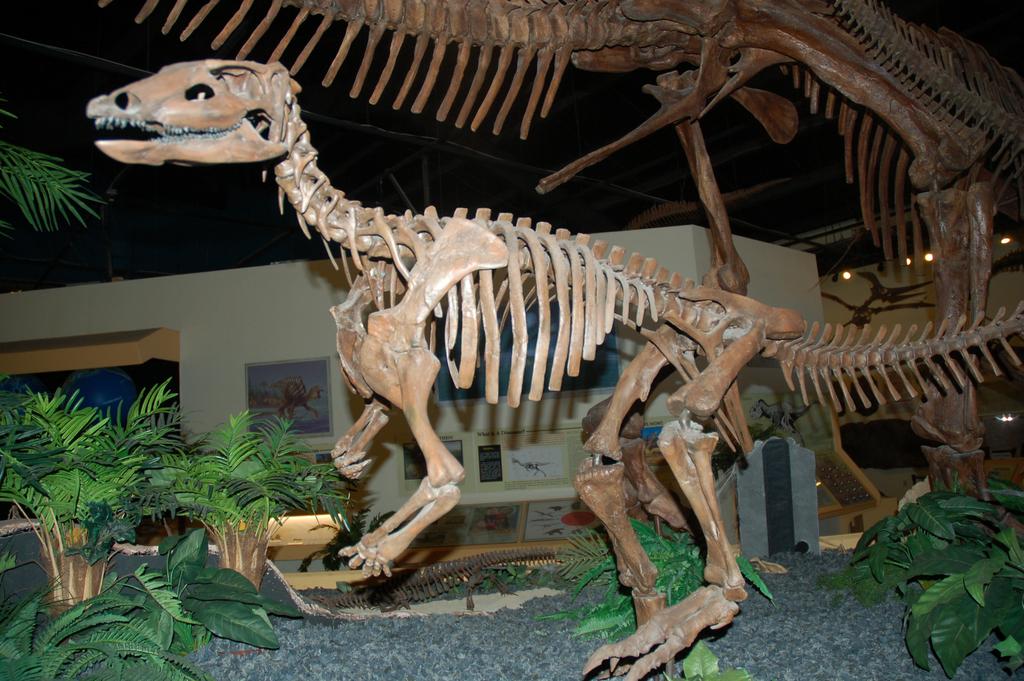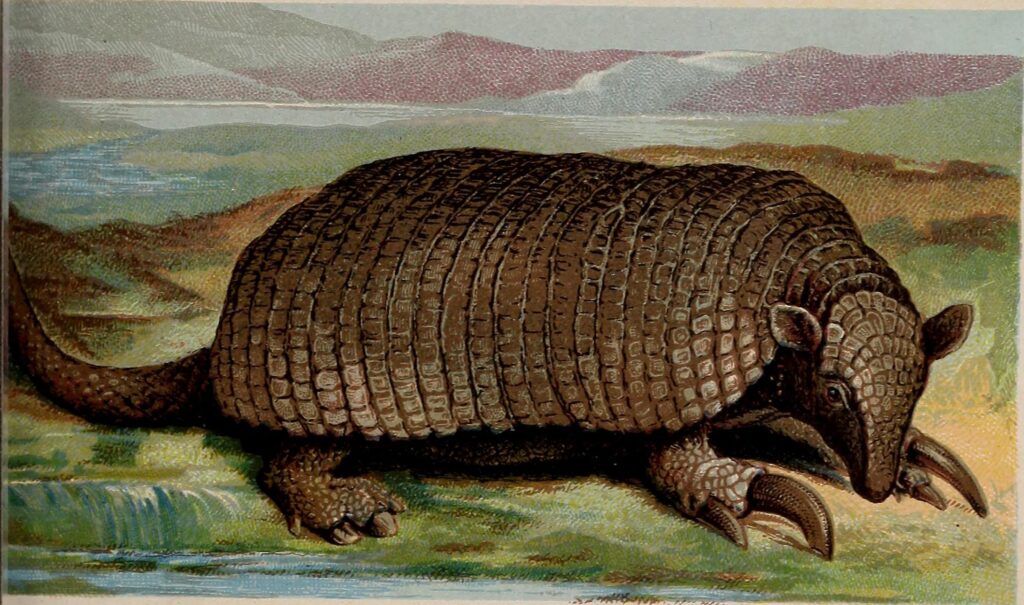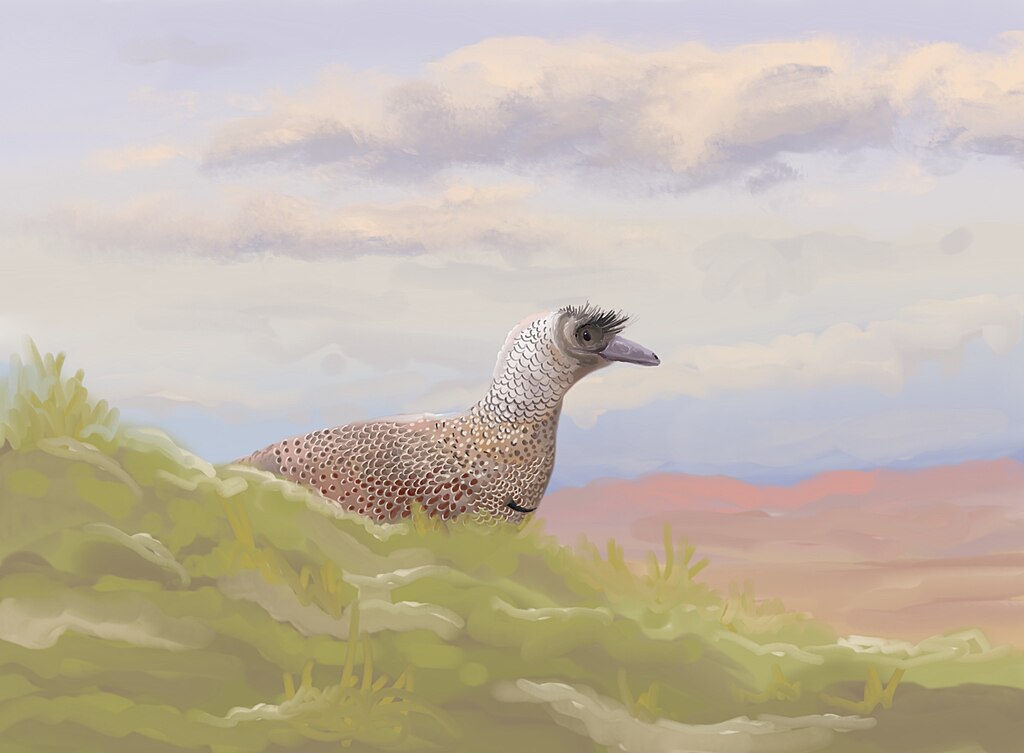The magnificent dinosaur skeletons that tower over museum visitors represent the culmination of a remarkable scientific process spanning multiple disciplines and often years of painstaking work. These impressive displays begin as fragments buried in rock, sometimes for over 65 million years, before undergoing a complex transformation through discovery, excavation, preparation, research, and finally, exhibition. The journey from fossil to museum exhibit involves numerous specialists, including paleontologists, geologists, fossil preparators, and exhibit designers, each contributing their expertise to bring these ancient creatures back to life in our modern world. This extraordinary process combines scientific rigor with artistic vision to create educational experiences that inspire wonder in visitors of all ages.
Discovery: Finding Ancient Treasures

The journey begins with discovery, often occurring through systematic paleontological fieldwork or sometimes by chance encounters. Professional paleontologists conduct surveys in promising geological formations, looking for telltale signs of fossil material exposed by erosion. Fossil hunters examine outcrops where sedimentary layers of the right age are exposed at the surface, scanning for bone fragments that might indicate larger remains below. Many significant discoveries have also come from amateur collectors, construction workers, or even hikers who stumble upon fossils accidentally. The initial discovery might reveal just a small portion of bone protruding from rock—a tantalizing hint of what lies beneath. Before any excavation begins, scientists carefully document the discovery site with photographs, GPS coordinates, and notes about the geological context, as this information will be crucial for scientific analysis later in the process.
Preliminary Assessment and Planning
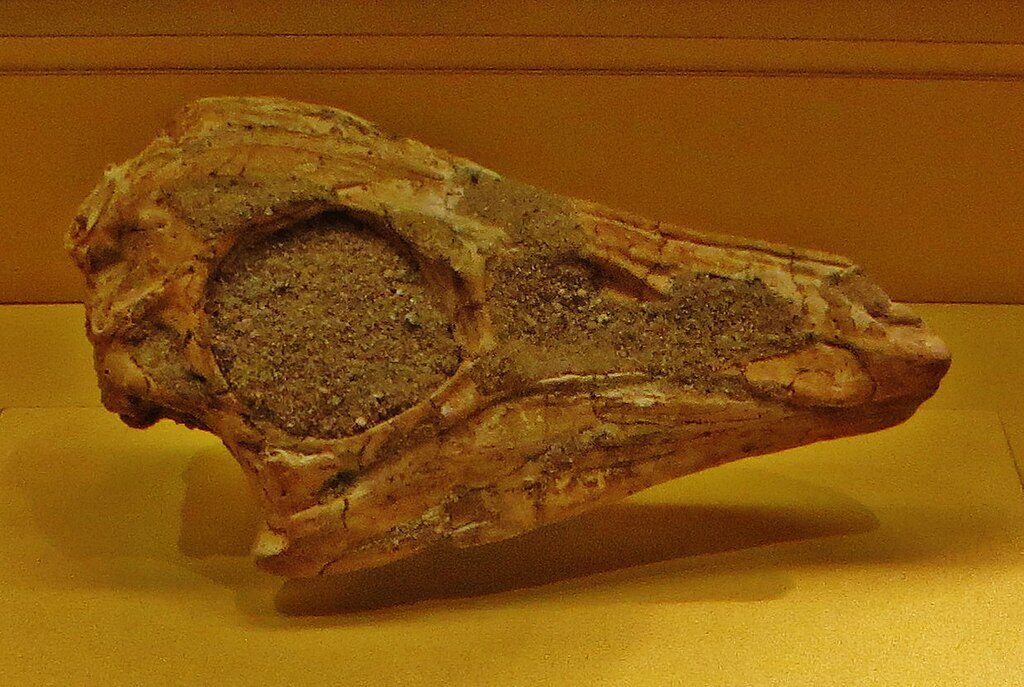
Once a potential dinosaur fossil is identified, paleontologists conduct a preliminary assessment to determine its scientific value and whether full excavation is warranted. This evaluation considers factors such as the fossil’s completeness, rarity, preservation quality, and the logistics of extraction. The team examines the surrounding sediment for additional bone fragments and determines the approximate extent of the skeleton. Paleontologists must obtain proper permits from landowners or government agencies before proceeding, as fossils may be protected by various regulations depending on where they’re found. The planning phase also involves assembling the necessary equipment, personnel, and funding for what might become a multi-week or even multi-year excavation project. Weather conditions and field seasons must be considered, as excavations typically occur during dry months when access to remote sites is easier and delicate fossils won’t be damaged by precipitation.
Field Excavation: Unearthing the Past
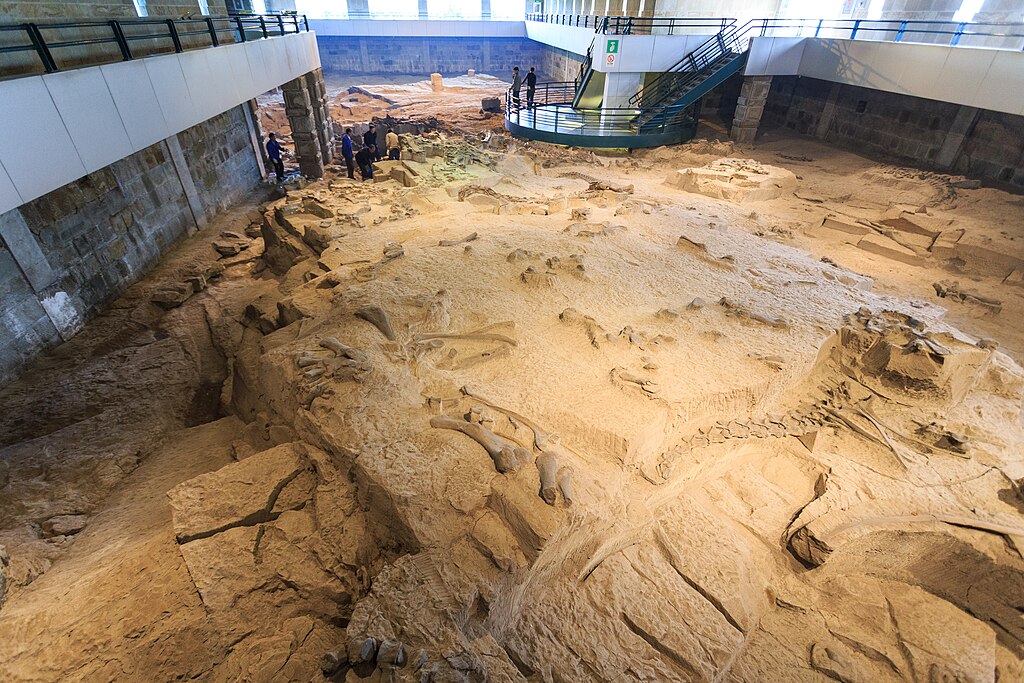
The excavation process requires extraordinary patience and precision to prevent damage to fragile fossils that have become brittle over millions of years. Teams use a combination of tools ranging from bulldozers for removing overburden (the non-fossil-bearing rock above the specimen) to dental picks and brushes for the final detailed work around the bones themselves. As excavation progresses, paleontologists create detailed maps documenting the exact position of each bone, which provides valuable information about the animal’s anatomy and taphonomy—the processes that affected the organism after death. Exposed bones are typically covered with a protective layer of tissue paper followed by burlap strips soaked in plaster, creating field jackets that protect the fossils during transport. These plaster jackets, sometimes weighing hundreds or even thousands of pounds, are carefully extracted from the ground using equipment ranging from simple hand tools to heavy machinery, depending on their size. The field team also collects samples of the surrounding sediment for later analysis of the ancient environment.
Transportation: The Delicate Journey
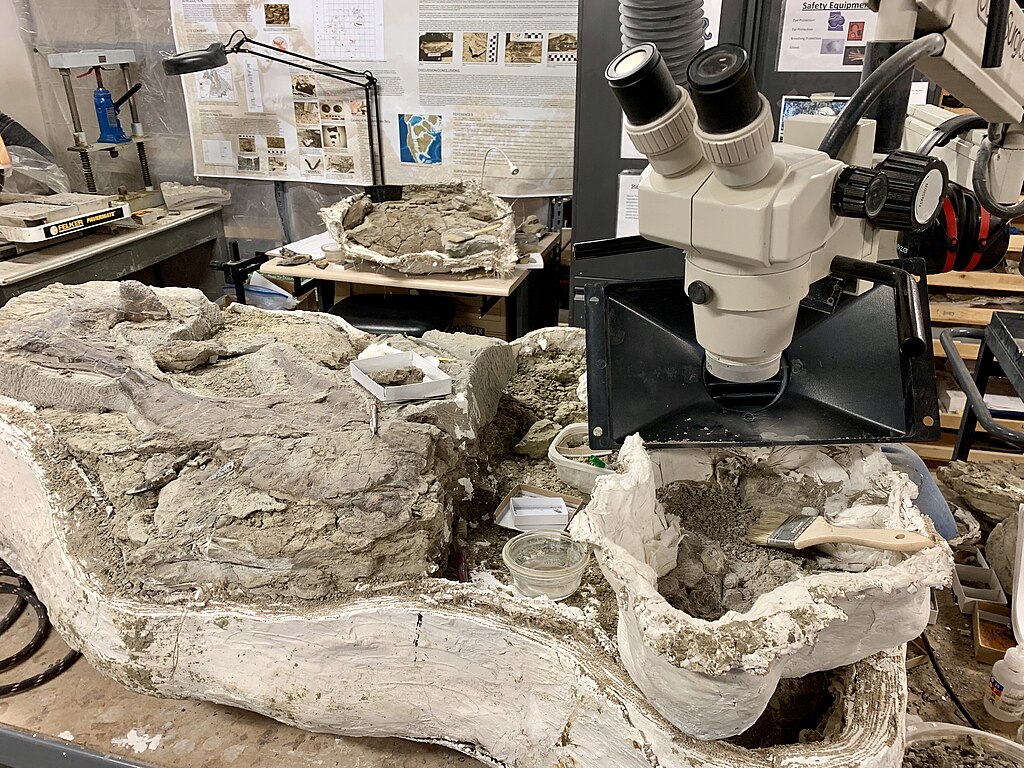
Transporting dinosaur fossils from remote field sites to research facilities presents significant logistical challenges that require careful planning and execution. Field jackets containing fossil material must be secured to prevent shifting during transport that could damage the specimens inside. For smaller specimens, transportation might involve four-wheel-drive vehicles navigating rough terrain to reach main roads. Larger dinosaur remains often require specialized equipment such as flatbed trucks, helicopters, or even mules in particularly inaccessible locations. During international expeditions, fossils must clear customs and comply with regulations governing the movement of paleontological specimens across borders. Throughout the transportation process, fossils remain in their protective plaster jackets, which shield them from vibration, moisture, and physical impacts. The journey might involve multiple modes of transportation before the specimens finally arrive at a preparation laboratory, sometimes thousands of miles from where they were discovered.
Laboratory Preparation: Revealing the Bones

Once safely delivered to the laboratory, the meticulous work of preparation begins—arguably the most time-consuming phase of the entire process. Skilled preparators carefully remove the field jackets and begin the delicate task of separating the fossil from its surrounding matrix (the rock in which it was embedded). This work requires specialized tools, including pneumatic engravers, dental picks, air abrasion units that use pressurized air with fine powder, and even acids for certain types of matrix. Preparators work under magnification, sometimes removing rock grain by grain to avoid damaging the fossil surface. The process can take months or even years for a single large specimen, with preparators frequently logging thousands of hours on complex skeletons. During preparation, bones are stabilized with consolidants—special glues that penetrate and strengthen the fossil material without damaging it. Broken pieces are carefully reassembled, though preparators are careful to distinguish between ancient breaks that occurred before fossilization and those that happened during excavation or transport.
Scientific Research and Documentation
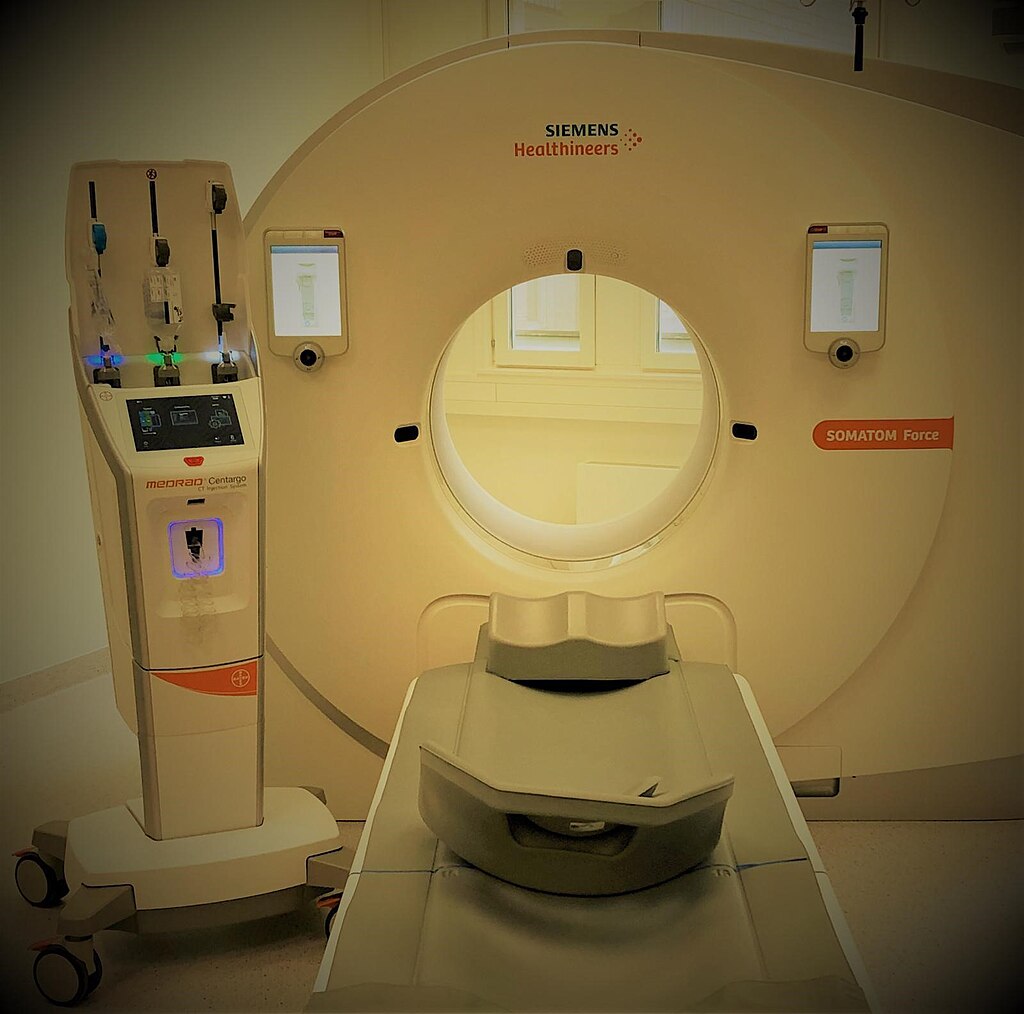
As preparation progresses, paleontologists conduct detailed scientific analysis to understand what the fossils reveal about the animal and its world. Researchers measure and photograph each bone from multiple angles, sometimes creating 3D scans that allow for digital manipulation and analysis. Comparative studies with other specimens help determine whether the dinosaur represents a known species or something new to science. Scientists examine microscopic features of the bones that can reveal information about the animal’s growth, age at death, and potential diseases or injuries it sustained during life. Geochemical analyses of the fossils and surrounding sediments provide insights into the ancient environment and potentially the animal’s diet. This research phase often involves collaboration between specialists at multiple institutions, with findings ultimately published in peer-reviewed scientific journals where they contribute to our broader understanding of dinosaur biology and evolution.
Creating Missing Elements
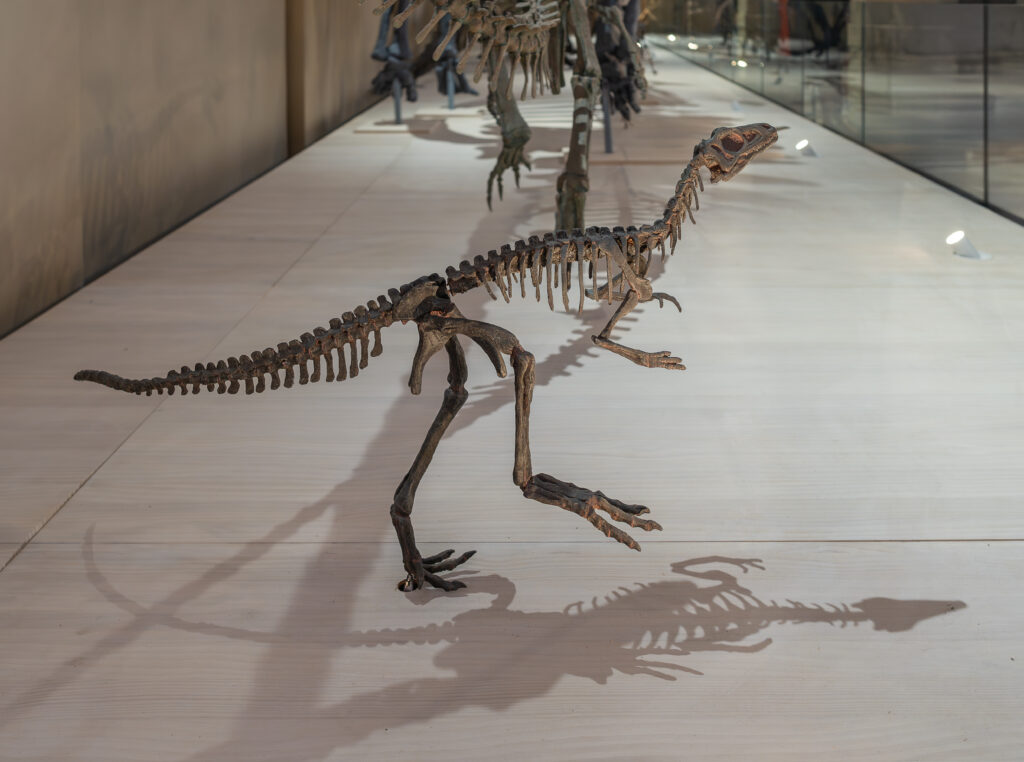
Even the most complete dinosaur skeletons typically have some missing elements that must be reconstructed before exhibition. Missing bones may be replicated through several methods, each with advantages for different situations. Mirroring is a common technique where existing bones from one side of the body are scanned and mirrored to create matching pieces for the opposite side. For elements missing entirely, paleontologists might borrow from closely related species, scaling the bones appropriately based on proportional relationships observed in related dinosaurs. Modern technologies like 3D printing have revolutionized this process, allowing precise reproduction of complex shapes based on digital models. Larger missing elements may be sculpted by hand in clay before being cast in durable materials like fiberglass or lightweight resins. Throughout this reconstruction process, museums maintain careful records distinguishing original fossil material from reproductions, maintaining scientific integrity while creating a complete visual experience for visitors.
Mounting the Skeleton
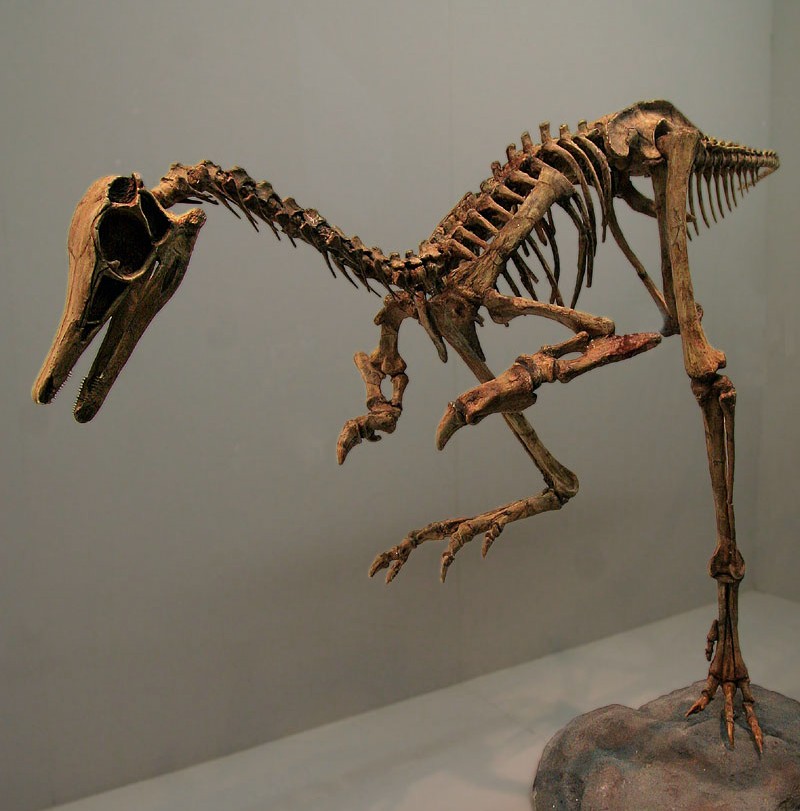
Transforming individual bones into a freestanding dinosaur skeleton requires engineering expertise to create a mount that is both scientifically accurate and structurally sound. Modern mounting techniques typically utilize a custom internal armature of steel that supports the weight of the fossils (or casts) while remaining as unobtrusive as possible. Engineers must calculate load-bearing requirements and design supports that accommodate the unique shapes of each bone while allowing for future disassembly if needed for research. The pose selected for the mount represents a careful scientific decision based on evidence from muscle attachment points, joint articulations, and comparisons with related living animals. Contemporary mounts often depict dinosaurs in dynamic, scientifically plausible postures rather than the stiff, tail-dragging poses common in older exhibits. Special consideration is given to weight distribution, as some large dinosaur skeletons can weigh several tons even when parts are replaced with lightweight casts. The mounting process itself may take weeks or months of precise work to position each element correctly.
Exhibit Design and Contextual Elements

Creating an effective dinosaur exhibit involves more than just mounting the skeleton—it requires thoughtful design that places the specimen in its proper scientific and historical context. Exhibit designers work with paleontologists to develop interpretive materials, including text panels, illustrations, interactive elements, and supplementary specimens that enhance the visitor’s understanding. Environmental recreations might include models of contemporary plants, other animals from the same ecosystem, or representations of the ancient landscape based on geological evidence. Lighting design plays a crucial role in highlighting important features of the skeleton while creating an appropriate atmosphere. Modern exhibits increasingly incorporate digital elements such as animations of the living animal, touchscreen interactives exploring anatomy, or augmented reality experiences that bring the skeleton to life. Throughout the design process, teams consider diverse audiences, ensuring content is accessible to visitors with different backgrounds, ages, and knowledge levels.
Installation and Final Touches
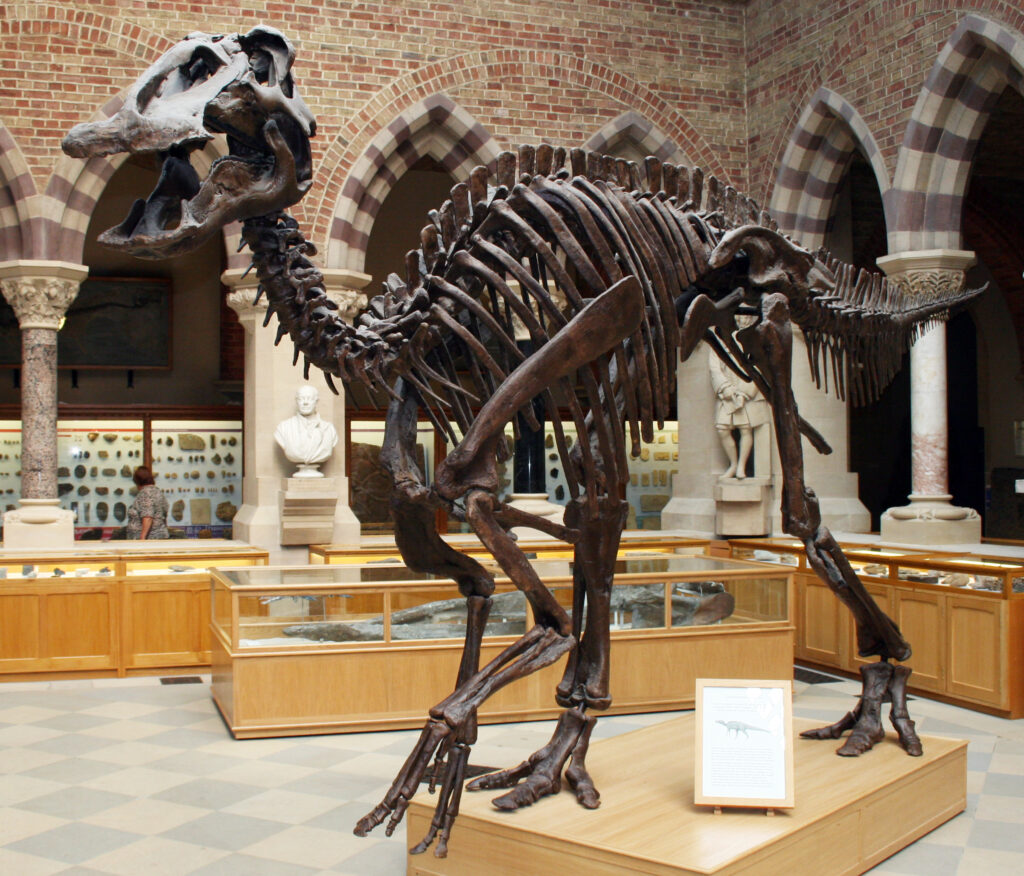
Installing a dinosaur skeleton in its final exhibit location requires careful planning and precise execution. The exhibition space must be prepared with appropriate structural reinforcements if the floor needs to support particularly heavy specimens. Installation often occurs during museum closure periods and may require temporary removal of doors, walls, or even windows to accommodate large skeletal elements. Teams use specialized equipment, including gantry cranes, scissor lifts, and custom-built transport cradles, to move and position delicate components. Final assembly typically proceeds from the ground up, with the armature secured to the floor before individual bones or sections are attached in sequence. Once the skeleton is fully assembled, lighting technicians fine-tune the illumination to highlight key features while minimizing shadows that might obscure important details. Conservators perform final inspections, ensuring all elements are secure and properly positioned before the protective barriers are installed to keep visitors at a safe distance while allowing optimal viewing.
Conservation and Ongoing Care
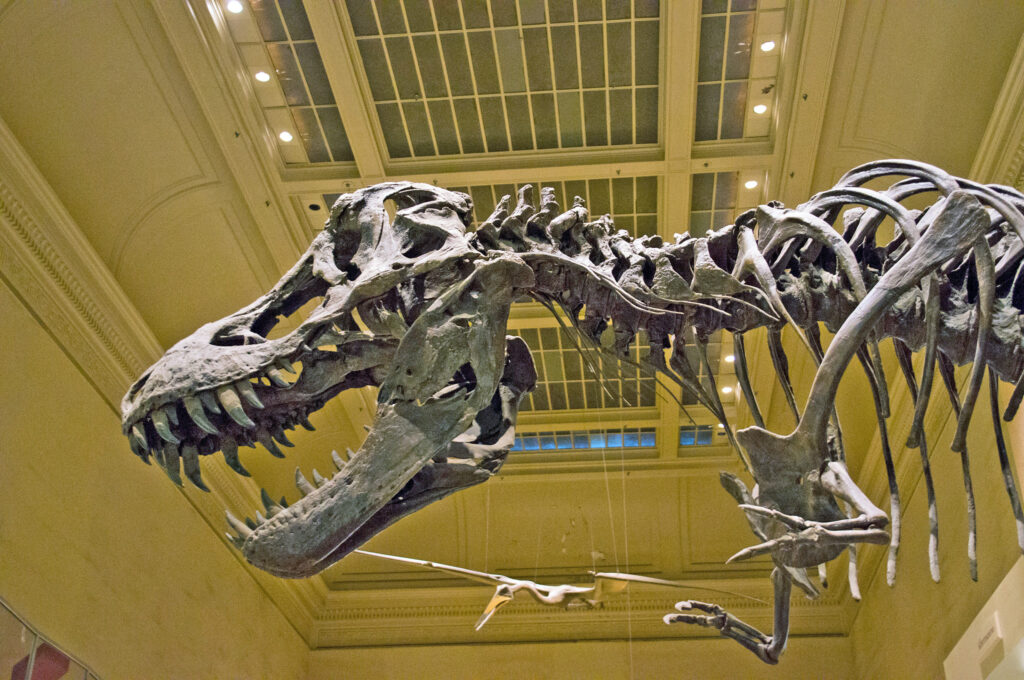
The journey of a dinosaur fossil doesn’t end once it’s on display—ongoing conservation is essential to preserve these irreplaceable specimens for future generations. Museum conservators regularly monitor exhibited fossils for signs of deterioration, which might result from environmental factors like fluctuating humidity, vibration, dust accumulation, or light exposure. Many institutions maintain strict environmental controls in exhibition halls, regulating temperature and humidity within narrow ranges to minimize stress on fossil materials. Regular gentle cleaning removes accumulated dust that can obscure details and potentially cause damage over time. Conservators maintain detailed records of each specimen’s condition, documenting any changes and implementing preventive measures before serious problems develop. Some museums periodically rotate specimens between display and storage to limit cumulative environmental exposure, particularly for especially rare or fragile fossils. The conservation team also develops emergency response protocols to protect specimens during potential disasters such as fires, floods, or earthquakes.
Education and Public Engagement
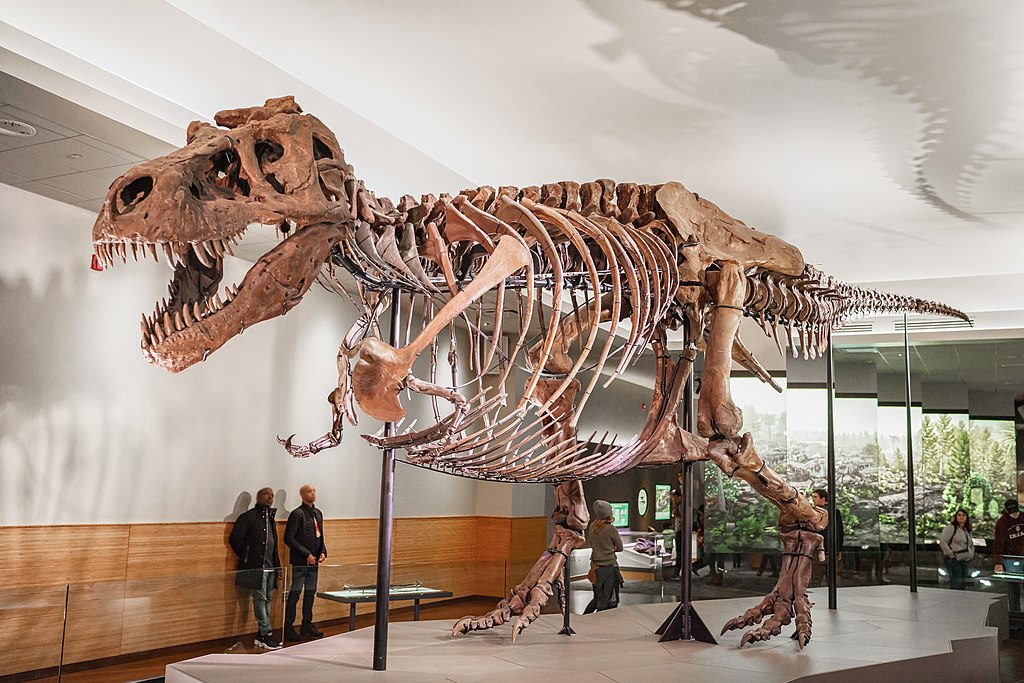
Dinosaur exhibits serve as powerful educational tools that inspire curiosity about science and natural history across generations. Museums develop comprehensive educational programming around their dinosaur displays, including guided tours, classroom materials for visiting school groups, and public lectures by paleontologists. Trained docents often staff the exhibits, answering visitors’ questions and providing additional context beyond what appears on text panels. Many institutions offer hands-on experience, such as fossil preparation demonstrations or touchable specimen cas, ts that enhance visitor engagement through tactile learning. Special programming might include behind-the-scenes tours of preparation laboratories or fossil collections not normally accessible to the public. Digital extensions of the physical exhibit, including virtual tours, online educational resources, and social media content, allow the museum to reach audiences beyond those who visit in person. These educational efforts transform the mounted skeleton from a static display into a dynamic teaching tool that communicates both scientific knowledge and the process of scientific discovery.
Legacy and Scientific Contribution
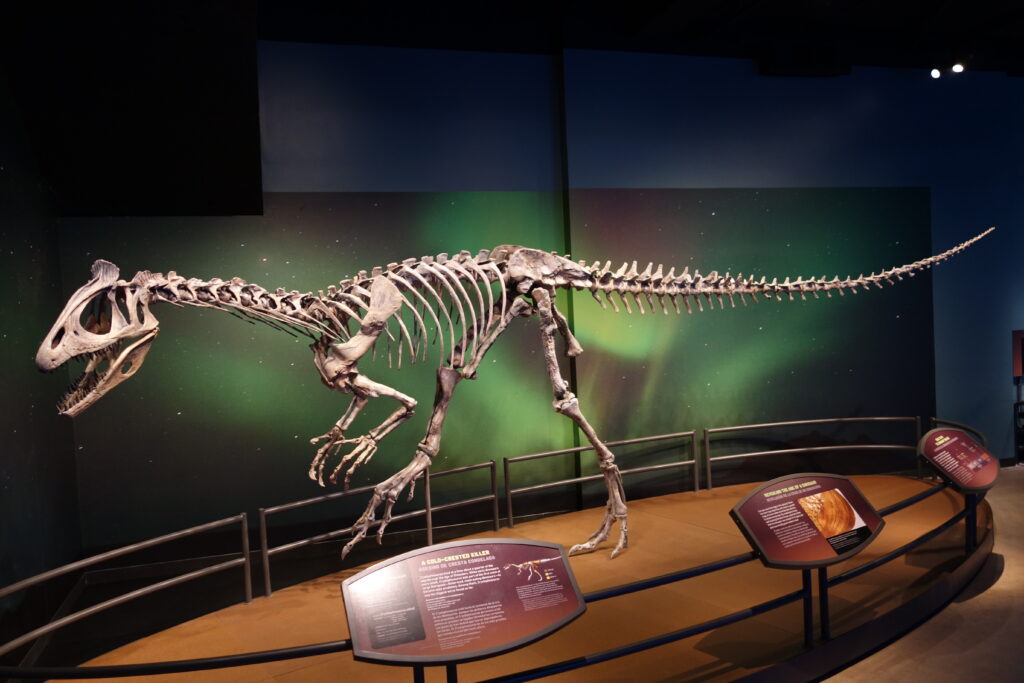
Museum dinosaur exhibits contribute to both public education and ongoing scientific research in ways that extend far beyond their immediate visual impact. The specimens themselves remain available to researchers, who continue to study them as new questions arise or improved analytical techniques become available. Digital data from 3D scans of the fossils may be shared with scientists worldwide, facilitating comparative studies without requiring physical access to the specimens. The initial research that accompanied the specimen’s preparation and mounting often leads to follow-up studies exploring specific aspects of the dinosaur’s biology, behavior, or evolutionary relationships. Public fascination with these exhibits inspires young visitors to pursue careers in paleontology and related sciences, creating new generations of researchers. The financial support generated through museum admissions and dinosaur-themed programming helps fund future fieldwork and research, creating a positive feedback loop that advances paleontological knowledge. In this way, the journey from fossil to exhibit represents not an endpoint but rather a transition to a new phase in the specimen’s scientific life.
Conclusion: Time Travelers in Our Midst

The transformation from buried bone to museum centerpiece represents an extraordinary collaboration between science, technology, and artistry. Each mounted dinosaur skeleton tells multiple stories—about the ancient animal itself, about the world it inhabited millions of years ago, and about the human endeavor to understand our planet’s past through paleontological discovery. These exhibits serve as bridges across deep time, allowing visitors to stand face-to-face with creatures that walked the Earth long before humans existed. The meticulous process of bringing dinosaur fossils frthe om field to the exhibition hall ensures that these precious scientific resources are preserved while being made accessible for public appreciation and inspiration. As methods of discovery, preparation, and display continue to evolve, museum dinosaur exhibits will remain powerful ambassadors for science education, connecting visitors to the wonders of prehistoric life and the ongoing adventure of paleontological exploration.

